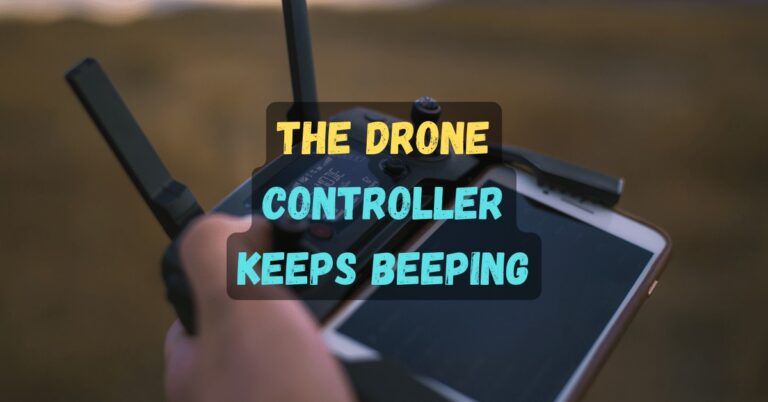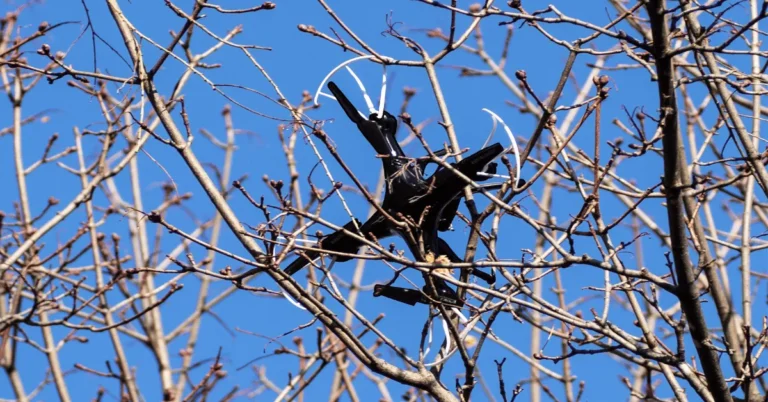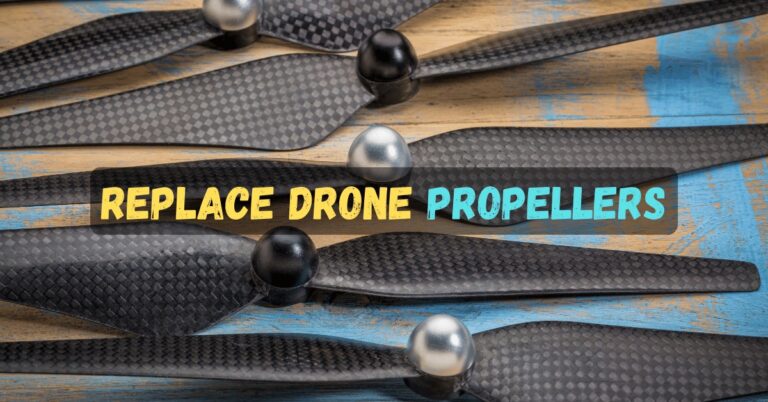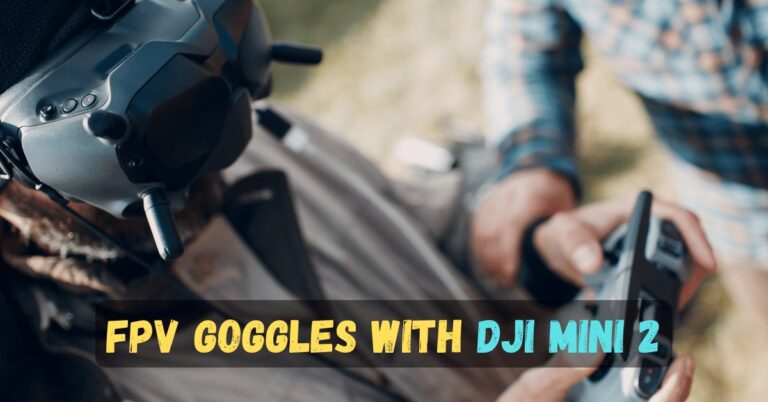Are Drones Good for Night Photography?
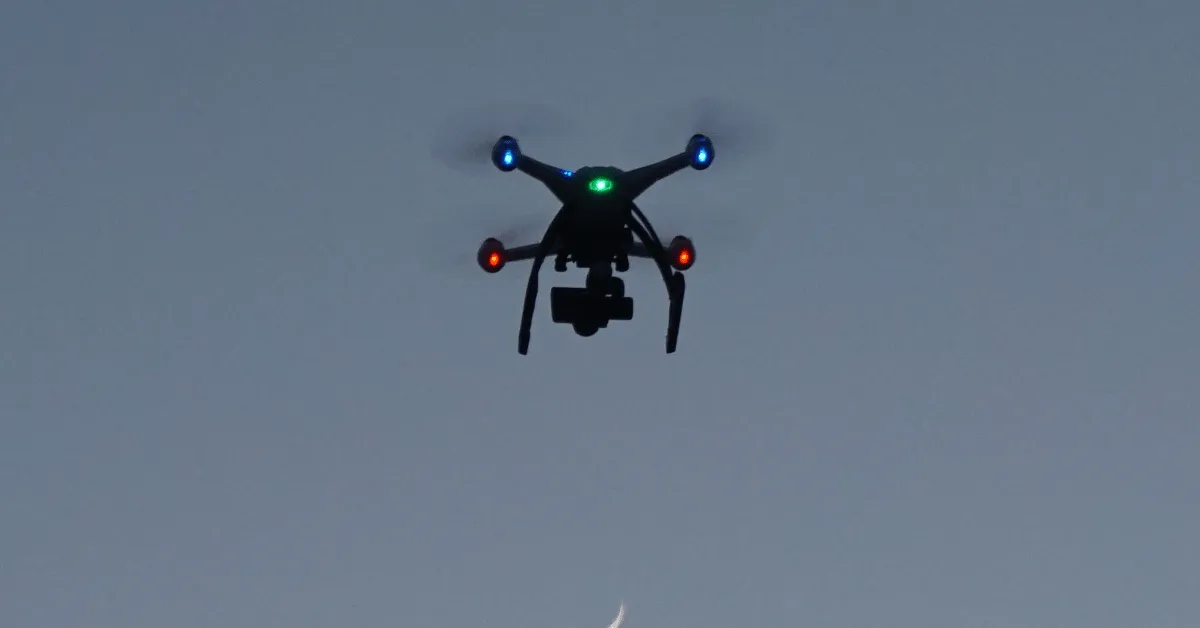
Drones can be great for night photography, as they offer unique vantage points and allow you to capture stunning images even in low-light conditions.
With their advanced cameras and stabilization technology, drones can capture sharp and clear images even in the dark, making them ideal for capturing cityscapes, landscapes, and even starry skies.
In this article, we will explore the benefits of using drones for night photography, and provide some tips and techniques for taking stunning night photos with your drone.
Key Takeaways
- Night Photography Excellence: Drones excel in capturing sharp images even in the dark, including cityscapes and starry skies.
- Technology’s Impact: Advancements make night photography with drones even more fascinating.
- Drones Evolve for Nights: Originally for videography, drones are now prominent in night photography.
- Unique Angles: Drones offer unmatched perspectives due to their flexibility in height and angles.
- Mobility Advantage: Drones access remote places, expanding possibilities for captivating night shots.
- Stability & Quality: Modern drones’ stabilization and image sensors ensure clear low-light images.
- Top Choices: DJI Mavic 2 Pro, Autel Robotics EVO II, and DJI Phantom 4 Pro are exceptional for night photography.
- Safety & Regulations: Flying drones at night requires adherence to FAA rules and safety guidelines.
- Master Manual Mode: Control camera settings for better night photography results.
- Practice for Perfection: Practice and experimentation are vital for stunning night shots with drones.
Are Drones Good for Night Photography?
Night photography has always been a captivating art form, but with the advancements in technology, it has become even more intriguing.
Drones, originally designed for aerial videography and surveillance, have now found their way into the realm of night photography.
In this article section, we will explore the benefits of using drones for night photography, the best drones for this purpose, and some essential techniques and tips to capture stunning night photos with drones.
Benefits of Using Drones for Night Photography
Unparalleled Perspective: Drones provide photographers with an unparalleled perspective for night photography.
By hovering at various heights and angles, they offer unique vantage points that are otherwise challenging or impossible to achieve with traditional photography equipment.
Enhanced Mobility: Drones offer exceptional mobility, enabling photographers to access remote and difficult-to-reach locations with ease.

This mobility opens up a whole new world of possibilities for capturing captivating night shots in areas that were previously off-limits.
Stability and Image Quality: Modern drones come equipped with advanced stabilization technology, ensuring sharp and clear images even in low-light conditions.
Additionally, high-end drones boast powerful cameras with impressive image sensors, allowing for outstanding image quality in the dark.
Night Photography Drone Techniques
- Long Exposure Shots: One of the most popular techniques for drone night photography is long exposure shots. By using slow shutter speeds, drones can capture the movement of lights, creating mesmerizing light trails and dreamy, otherworldly effects.
- Light Painting: Drones can be utilized as a creative tool for light painting in the night sky. By attaching an LED light to the drone and setting a long exposure, photographers can draw patterns and designs while the drone flies, resulting in stunning visual masterpieces.
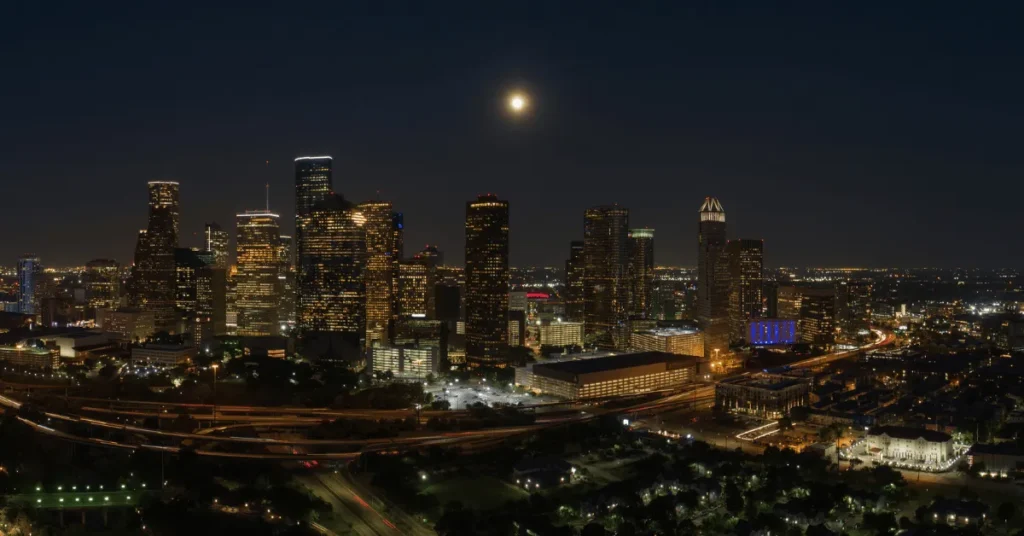
Tips for Drone Night Photography
- Master Manual Mode: To have full control over the camera settings for night photography, it’s crucial to use the drone’s manual mode. Adjusting parameters like shutter speed, aperture, and ISO can make a significant difference in the final image quality.
- Check Weather Conditions: Before venturing out for a night photography session, always check the weather conditions. Calm winds and clear skies are ideal for smooth flights and sharp night shots.
- Plan Your Shots: Plan your night photography sessions meticulously, considering the position of stars, moon, and artificial lights. This will help you capture well-composed and captivating images.
Capturing Night Photos with Drones
To capture stunning night photos with drones, it’s crucial to practice and experiment. Embrace the challenges that come with low-light conditions, and gradually refine your techniques to achieve breathtaking results.
Drone Camera Settings for Night Photography
For successful night photography, use the following drone camera settings:
- Shutter Speed: Experiment with slow shutter speeds (around 1 to 10 seconds) for long exposure shots and light trails.
- Aperture: Choose a wide aperture (low f-stop value) to allow more light into the camera sensor.
- ISO: Keep the ISO as low as possible to minimize noise in the final images.

Drone Long Exposure Night Shots
Long-exposure shots with drones can transform the night scenery into an enchanting spectacle. The extended exposure time captures the motion of lights, creating stunning visual effects that showcase the beauty of the night.
Read More: What is Auto Orientation on a Drone? (How to Use it?)
Low-Light Drone Photography
Low-light photography with drones demands patience, skill, and the right equipment. However, the results are often awe-inspiring, with unique perspectives and dramatic lighting creating truly exceptional images.
Drone Night Vision Capabilities
While some drones come with night vision capabilities, they are typically used for surveillance and not optimized for photography.
For captivating night shots, it’s best to rely on drones equipped with high-quality cameras and masterful night photography techniques.
How good are drone cameras at night?
Drone cameras are quite impressive when it comes to night photography. With advancements in technology, modern drones are equipped with features that enhance their performance in low-light conditions, allowing them to capture stunning images even after the sun sets.

The key factors contributing to their effectiveness include larger image sensors, wider apertures for better light gathering, and a broad ISO range for adjusting to different lighting situations. These features ensure sharp and clear images with minimal noise in challenging light conditions.
As for the best drone for night photography, some popular options are the DJI Mavic 2 Pro, Autel Robotics EVO II, and DJI Phantom 4 Pro, all known for their exceptional low-light performance and image quality.
Flying a drone at night opens up a world of creative possibilities, allowing you to capture mesmerizing nightscapes, and light trails, and even experiment with long exposure shots and light painting techniques.
Just remember to follow local regulations and safety guidelines when flying at night to make the most of your nocturnal aerial photography adventures.
If you’re interested in capturing breathtaking shots under the moonlit sky, drones with their night vision capabilities and high-quality cameras are the way to go. So, go ahead and explore the captivating world of night photography with drones!
Big Tip For You
Maximize your drone’s night photography potential by choosing models with larger image sensors, wide apertures, and adjustable ISO settings. These features ensure stunning shots even in low-light conditions, allowing you to capture captivating images under the moonlit sky.
Sulman Khan
Which drone is best at night?
When it comes to capturing captivating aerial shots under the veil of darkness, having the right drone with exceptional low-light capabilities is essential.
In this article section, we will explore the top drones that excel in night photography and uncover the key features that make them stand out in the dark.
Best Drones for Night Photography
DJI Mavic 2 Pro
The DJI Mavic 2 Pro is a powerhouse when it comes to night photography.
Equipped with a 1-inch CMOS sensor and an adjustable aperture, this drone shines in low-light conditions, capturing stunning images with impressive dynamic range and minimal noise.

Its enhanced ISO range further allows for excellent performance in dark environments.
Autel Robotics EVO II
With its high-resolution camera and larger sensor, the Autel Robotics EVO II is a top contender for night photography.
This drone boasts exceptional image quality and color accuracy, making it perfect for capturing detailed and vivid shots in low-light settings.
This drone also has a large 1-inch CMOS sensor and a wide aperture of f/2.8. It also has a longer flight time than the Mavic 2 Pro, making it a good choice for long-exposure night photography.
DJI Phantom 4 Pro
The DJI Phantom 4 Pro is renowned for its outstanding night photography capabilities.
Featuring a 1-inch CMOS sensor and advanced image processing, this drone delivers sharp and clear images, even in challenging lighting conditions.
Its long flight time ensures you have ample time to explore the night sky.
This drone has a smaller 1/2.3-inch CMOS sensor than the Mavic 2 Pro and EVO II, but it still has a wide aperture of f/2.8.

It also has a built-in ND filter that can help to reduce blur caused by camera shaking in low-light conditions.
Key Features for Night Photography
Large Image Sensor
A drone with a larger image sensor has the advantage of capturing more light, resulting in improved image quality and reduced noise in low-light environments.
Wide Aperture
A wide aperture, indicated by a lower f-stop value, allows more light to enter the camera sensor, essential for well-exposed photos in the dark.
High ISO Range
A broad ISO range enables the drone to adjust to different lighting situations effectively, ensuring clear images in various low-light conditions.
Advanced Stabilization
Drones with advanced stabilization technology minimize camera shake during long exposure shots, resulting in sharp and blur-free images at night.
Night Flight Safety
When flying a drone at night, safety should be a top priority. Look for drones equipped with bright LED lights for better visibility and consider additional lighting options to ensure a safe flight.
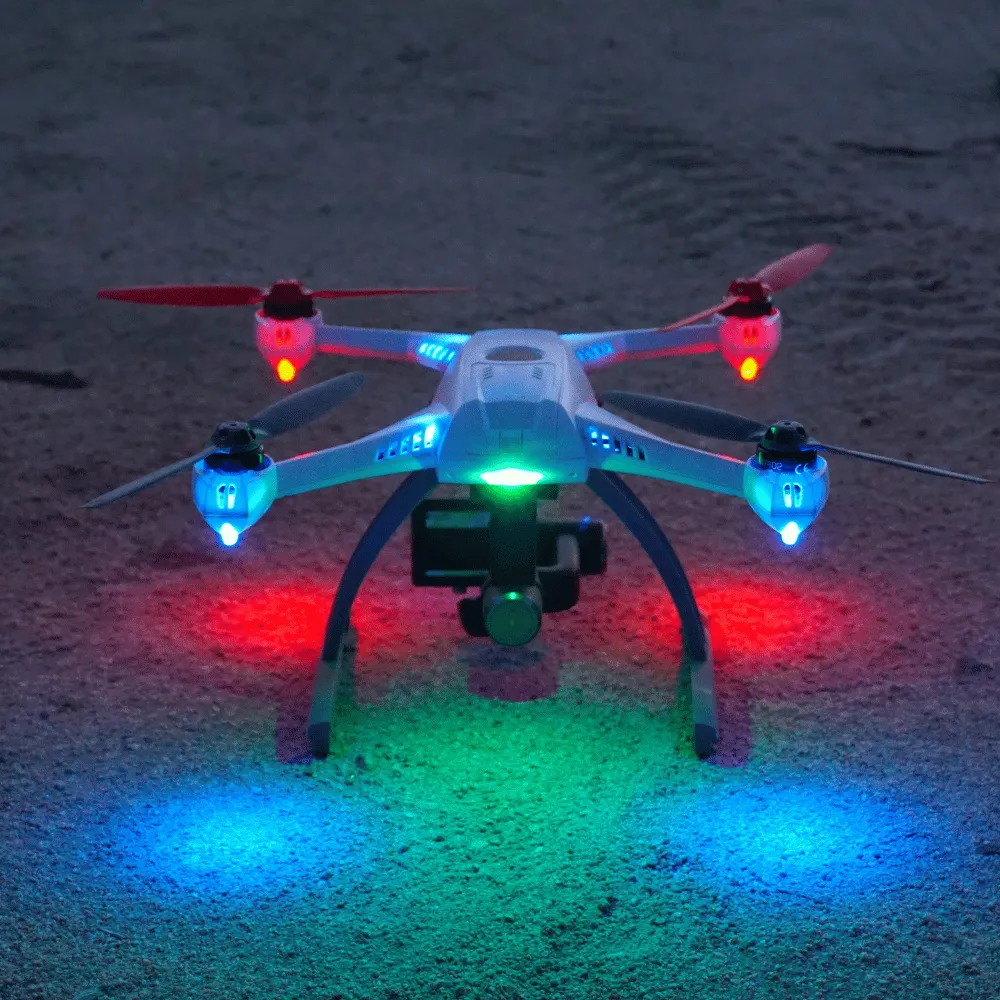
More details on image sensors, ISO, and aperture
here are some more in-depth explanations for the concepts of image sensors, ISO, and aperture:
Image sensor: The image sensor is the part of a camera that captures light and converts it into an electrical signal. The size of the image sensor is one of the most important factors in determining the quality of night photos.
Larger image sensors can capture more light, which results in less noise and better image quality in low-light conditions.
ISO: ISO is a measure of how sensitive a camera sensor is to light. A higher ISO setting will allow the camera to capture more light, but it will also increase the noise in the image.
This is why it’s important to use a high ISO setting only when necessary, such as when shooting in low-light conditions.
Aperture: The aperture is the opening in the lens that controls the amount of light that enters the camera. A wider aperture will allow more light to enter the camera, which is helpful for night photography.
However, a wider aperture will also result in a shallower depth of field, which means that only the objects in focus will be sharp.

Why would you fly a drone at night?
There are a few reasons why you might want to fly a drone at night. First, it can be a great way to get some amazing photos and videos. The night sky is full of stars and other celestial objects, and a drone can help you capture them in stunning detail.
Second, flying a drone at night can be a lot of fun. It’s a great way to explore your surroundings and see things in a new light. And if you’re into photography or videography, it’s a great way to challenge yourself and try something new.
Finally, flying a drone at night can be a useful tool for a variety of purposes. For example, drones can be used for security and surveillance, or search and rescue missions.
Of course, there are also some risks associated with flying drones at night. For example, it can be more difficult to see what’s around you, and there’s a greater risk of colliding with objects.
Additionally, the FAA has strict regulations governing drone flights at night, so you’ll need to make sure you’re familiar with them before you take off.
How far can a drone see at night?
The distance a drone can see at night depends on several factors, including the type of drone, the camera it’s equipped with, and the ambient light conditions.
In general, drones with larger image sensors and wider apertures will be able to see further in low-light conditions. This is because they can capture more light, which is essential for seeing in the dark.
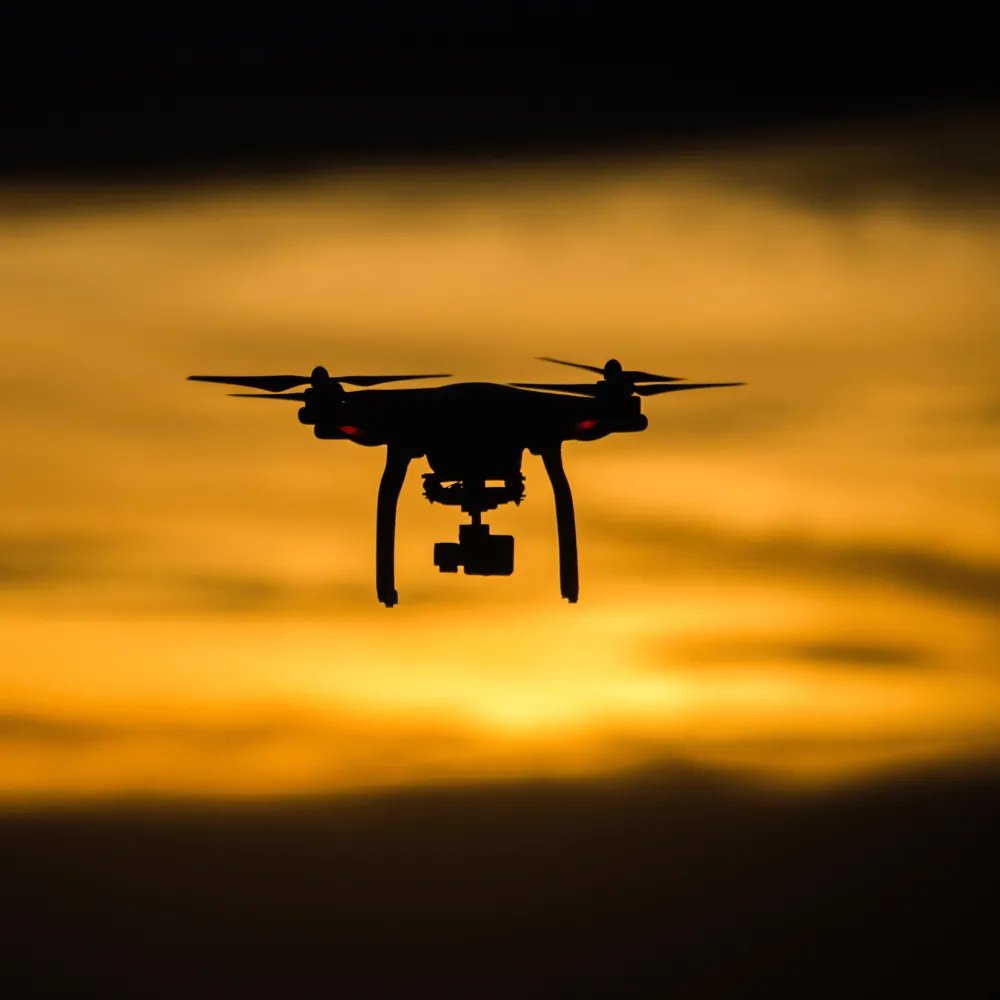
However, even the best drones will have a limited range of vision at night. This is because the amount of light available in the night sky is much lower than during the day.
As a rule of thumb, you can expect a drone to see about 100 feet in front of it at night. However, this distance can vary depending on the factors mentioned above.
If you’re planning on flying a drone at night, it’s important to be aware of its limited range of vision. This will help you avoid obstacles and keep your drone safe.
Here are some additional tips for flying a drone at night:
- Use a drone with a high-quality camera that is optimized for low-light conditions.
- Fly the drone in areas with good visibility.
- Avoid flying the drone in areas with heavy tree cover or other obstacles.
- Be aware of your surroundings and keep an eye on the drone at all times.
What are the legal safety guidelines for drone night photography?
In addition to the general safety guidelines for flying drones, there are some specific considerations to keep in mind when flying at night. These include:
- FAA regulations: The Federal Aviation Administration (FAA) has strict regulations governing drone flights at night. These regulations vary depending on the specific drone and the location of the flight. It is essential to familiarize yourself with these regulations before you fly a drone at night.
- Visibility: Night flights can be challenging due to limited visibility. It is important to fly in areas with good visibility and to avoid flying in areas with low-hanging clouds or fog.
- Collisions: Night flights can also be more prone to collisions with objects. It is important to fly slowly and carefully at night and to be aware of your surroundings.
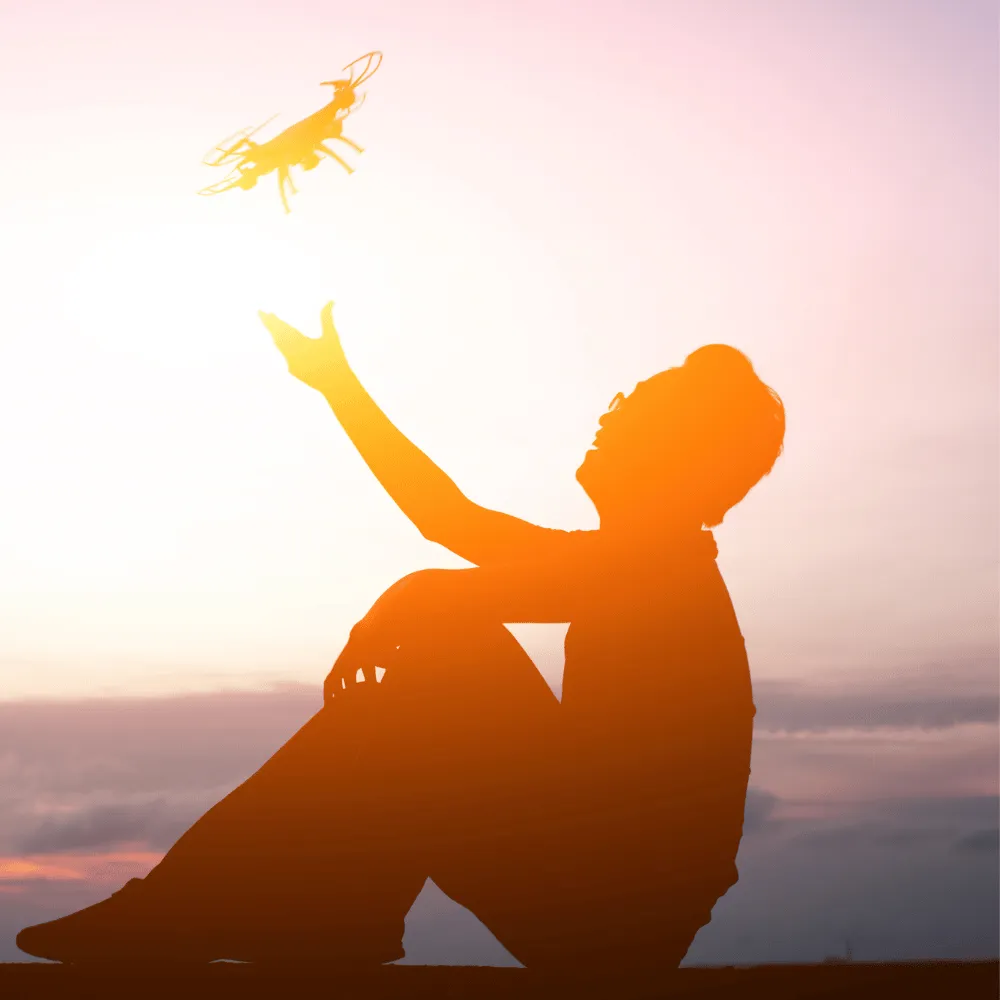
- Noise: Drones can be noisy, especially at night. It is important to be respectful of noise regulations and to avoid flying your drone in areas where it may disturb others.
Here are some additional safety guidelines for flying drones at night:
- Use a drone with a high-quality camera that is optimized for low-light conditions. This will help you capture clear and sharp images in the dark.
- Fly in areas with good visibility. Avoid flying in areas with low-hanging clouds, fog, or other obstacles that may obscure your vision.
- Fly slowly and carefully. This will help you avoid collisions with objects.
- Be aware of your surroundings. Keep an eye out for other aircraft, people, and animals.
- Use a noise-reducing drone. This will help you avoid disturbing others with the noise of your drone.
- Follow local regulations. Make sure you are familiar with the drone regulations in the area where you are flying.
By following these guidelines, you can help ensure a safe and enjoyable night flying experience.
FAA Regulations for Drone Flights at Night
The FAA has specific regulations governing drone flights at night. These regulations vary depending on the specific drone and the location of the flight.

In general, drones must be registered with the FAA and must be flown within the line of sight of the operator. Additionally, drones must not be flown in controlled airspace, such as near airports or military bases.
The FAA has also established several specific regulations for night drone flights. These regulations include:
- Drones must have a functioning anti-collision light system.
- Drones must be flown at a maximum altitude of 400 feet.
- Drones must be flown within 5 miles of the operator’s home or place of business.
- Drones must not be flown over people or moving vehicles.
The FAA is constantly updating its regulations for drone flights, so it is important to check the FAA website for the latest information before you fly your drone at night.
Safety Guidelines for Drone Flights at Night
In addition to the FAA regulations, several safety guidelines should be followed when flying drones at night. These guidelines include:
- Always fly in good weather conditions. Avoid flying in low-visibility conditions, such as fog or heavy rain.
- Always fly in areas with good lighting. This will help you see your drone and avoid obstacles.
- Always fly slowly and carefully. This will help you avoid collisions.
- Always be aware of your surroundings. Keep an eye out for other aircraft, people, and animals.
- Never fly your drone near airports or other sensitive areas.
- Never fly your drone under the influence of drugs or alcohol.
By following these safety guidelines, you can help ensure a safe and enjoyable night flying experience.
Watch this video to get more details:
Important FAQs
Can any drone be used for night photography?
Drones like the DJI Mavic 2 Pro, Autel Robotics EVO II, and DJI Phantom 4 Pro are popular options known for their excellent performance in low-light conditions.
Are there any specific regulations for flying drones at night?
It’s essential to familiarize yourself with these regulations before flying a drone at night to ensure safety and compliance.
How do drones capture long exposure shots for night photography?
Can drones be used for light painting in night photography?
What safety precautions should I take when flying a drone at night?
Fly in areas with good visibility and avoid flying near obstacles or heavily tree-covered areas. Always keep an eye on your drone and be aware of your surroundings to avoid potential collisions.
Can drones with night vision capabilities be used for night photography?
For capturing captivating night shots, it’s best to rely on drones equipped with high-quality cameras and specialized features for low-light conditions.
Final Thoughts
Drones are a powerful tool for night photography, offering unique perspectives and stunning visuals that are not possible with traditional photography equipment. With their advanced cameras and stabilization technology, drones can capture sharp and clear images even in low-light conditions.
If you’re interested in capturing breathtaking shots under the moonlit sky, drones are the way to go. However, it’s important to be aware of the risks associated with flying drones at night, such as limited visibility and the potential for collisions.
By following the tips in this article, you can safely and effectively capture stunning night photos with a drone.
Article Sources:
- DJI: https://www.dji.com/
- Parrot: https://www.parrot.com/
- FAA: https://www.faa.gov/
- Digital Photography Review: https://www.dpreview.com/
Images in this article are by: Canva.com
Benefits of Drone Technology in Security Services: Enhancing Surveillance and Safety
“Want to know how drones are upping the security game? 🚁 Discover the awesome benefits of drone tech in our quick article. It’s all about enhancing safety – read now!”

